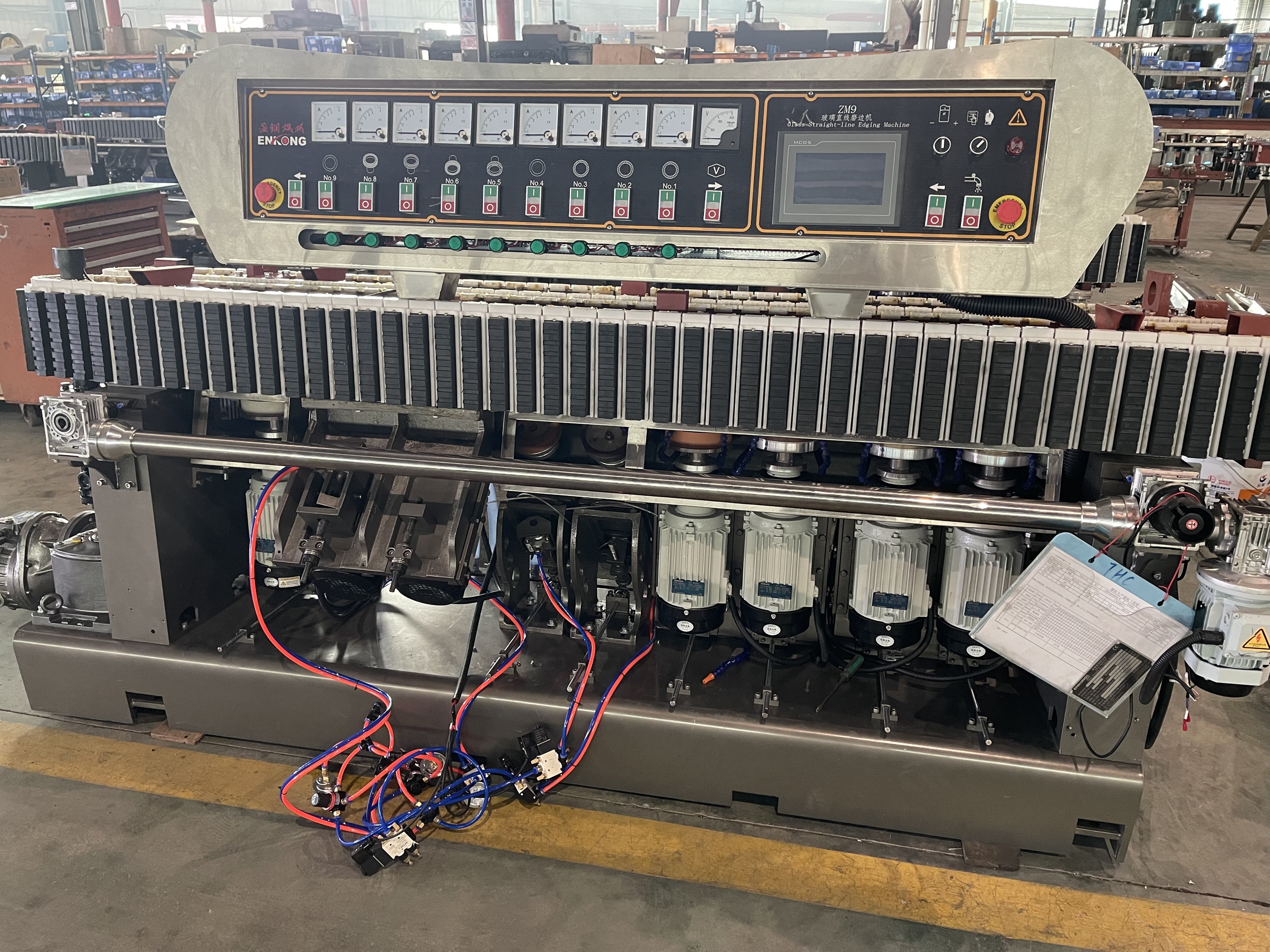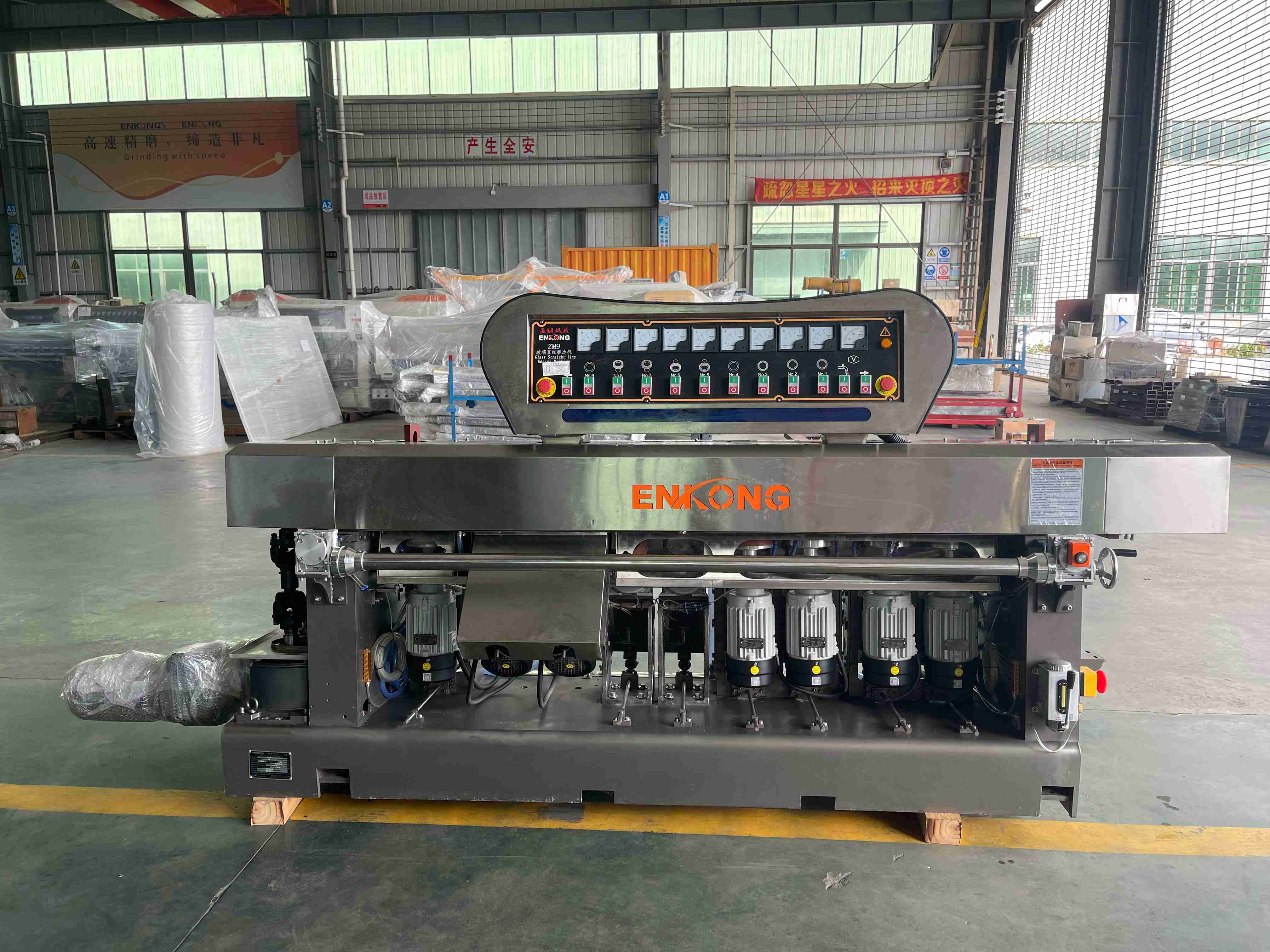The glass manufacturing sector is undergoing a paradigm shift, driven by the need for faster production cycles, tighter tolerances, and sustainable practices. At the heart of this transformation lies the glass double edging production line—a system that has redefined how industries process glass edges. But how does this technology outperform traditional methods? Why are glass production lines increasingly integrating double edging systems a longside glass deep processing machines? And what role do glass high-speed edging equipment innovations play in meeting global demand? This article delves into the technical prowess, industry applications, and future trends of these advanced systems, offering insights into their indispensable role in modern glass fabrication.
longside glass deep processing machines? And what role do glass high-speed edging equipment innovations play in meeting global demand? This article delves into the technical prowess, industry applications, and future trends of these advanced systems, offering insights into their indispensable role in modern glass fabrication.

1. The Anatomy of a Modern Glass Production Line: Why Double Edging is Non-Negotiable
A glass production line today is a symphony of precision engineering, where each machine must harmonize with others to achieve maximum efficiency. The glass double edging production line acts as a pivotal link in this chain, addressing one of the most labor-intensive stages: edge finishing. By processing both edges of a glass sheet simultaneously, this system eliminates bottlenecks that plague conventional single-edge setups.
Core Performance Advantages:
Unmatched Throughput: With glass high-speed edging equipment achieving speeds of 70 meters per minute, production capacity surges by up to 60%.
Dual-Axis Precision: Utilizing synchronized grinding heads, the system maintains edge parallelism within ±0.05 mm, critical for applications like photovoltaic panels and touchscreens.
Material Adaptability: From ultra-thin 1.5 mm display glass to 30 mm laminated safety glass, the glass double edging production line handles diverse substrates, seamlessly interfacing with downstream glass deep processing machines.
For manufacturers, this means fewer machines, reduced energy consumption, and a smaller footprint—key factors in optimizing glass production lines for Industry 4.0 standards.
2. Synergy with Glass Deep Processing Machines: How Does It Elevate Quality?
Glass deep processing machines—such as CNC cutters, tempering furnaces, and coating systems—rely on flawlessly prepared edges to function optimally. A glass double edging production line ensures edges are not just smooth but also geometrically consistent, a prerequisite for processes like laser engraving or thermal strengthening.
Integrated Workflow Benefits:
Reduced Rejection Rates: Chips or uneven edges from subpar edging equipment can cause fractures during tempering. The precision of glass high-speed edging equipment mitigates this risk.
Enhanced Automation: Robotic arms transfer glass directly from the glass double edging production line to glass deep processing machines, minimizing human handling and contamination.
Multi-Stage Compatibility: After edging, glass can undergo drilling, bevelling, or silk-screen printing without recalibration, thanks to the uniformity ensured by the glass production line’s design.
In the automotive sector, for instance, windshields edged via glass high-speed edging equipment exhibit superior adhesion when bonded to frames, a critical factor for crash safety.
3. Breakthroughs in Glass High-Speed Edging Equipment: What’s New?
The efficiency of a glass double edging production line hinges on its glass high-speed edging equipment. Recent advancements have pushed these systems beyond mere speed, focusing on intelligence and sustainability.
Cutting-Edge Features:
AI-Driven Predictive Maintenance: Sensors monitor abrasive wheel wear in real-time, automatically adjusting pressure or scheduling replacements—a leap forward for uninterrupted glass production lines.
Eco-Conscious Design: Water recycling systems and low-energy motors reduce the environmental footprint, aligning with regulations governing glass deep processing machines.
Hybrid Processing: Combining mechanical grinding with laser edge sealing, newer models eliminate micro-cracks, a boon for medical device glass requiring sterile surfaces.
A notable example is a Japanese manufacturer that slashed energy costs by 25% after upgrading to AI-enhanced glass high-speed edging equipment, while achieving zero-defect output for smartphone cover glass.
4. Applications of Glass Double Edging Production Lines: Which Industries Gain the Most?
While versatile, the glass double edging production line delivers disproportionate value to sectors where edge quality directly impacts product performance or aesthetics.
Key Sectors and Use Cases:
Renewable Energy: Solar panels require scratch-free edges to prevent light refraction losses. Glass high-speed edging equipment ensures the precision needed for maximum energy yield.
Home Appliances: Oven doors and refrigerator shelves demand edges that withstand thermal cycling. Integration with glass deep processing machines allows for post-edging tempering.
Aviation: Aircraft cabin windows undergo rigorous stress tests; edges polished by glass double edging production lines meet FAA standards for fatigue resistance.
A case study from a U.S.-based fabricator revealed that adopting a glass double edging production line reduced processing time for architectural glass facades by 40%, enabling the firm to secure contracts for two mega-skyscrapers in Dubai.
5. The Road Ahead: How Will Glass Production Lines Evolve with Double Edging Tech?
The future of glass production lines is being shaped by three disruptive trends, all of which hinge on advancements in glass double edging production line technology:
1. Digital Twin Integration: Virtual replicas of glass high-speed edging equipment allow operators to simulate and optimize processes before physical execution, minimizing trial-and-error waste.
2. Nanotechnology Coatings: Post-edging application of nano-ceramic coatings (via glass deep processing machines) can render glass self-cleaning or anti-bacterial—ideal for healthcare settings.
3. Modular Scalability: Compact, modular glass double edging production lines enable small-scale manufacturers to compete with giants, democratizing access to high-precision edging.
Furthermore, the push for carbon-neutral manufacturing will see glass production lines incorporating more recycled glass cullet, necessitating edging systems that can handle variable material densities without compromising speed.
Conclusion: Is Your Glass Production Line Ready for the Double Edging Revolution?
The glass double edging production line is no longer a luxury but a necessity for manufacturers aiming to thrive in a hyper-competitive market. By synergizing with glass high-speed edging equipment and glass deep processing machines, it addresses the trifecta of modern industrial demands: speed, precision, and sustainability.
From slashing operational costs to enabling breakthroughs in glass applications (think foldable smartphones or energy-generating windows), this technology is rewriting the rules of the game. As glass production lines become smarter and more interconnected, the question isn’t whether to adopt a glass double edging production line—it’s how quickly you can adapt to stay ahead.

